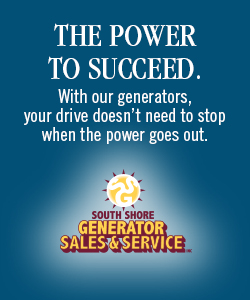By Lauren Shepherd
Behavioral targeting (also known as audience targeting) is the practice of customizing ads, emails, or website content according to actions people take online. By pulling in data from a variety of online sources, behavioral targeting allows companies to deliver highly personalized messages that are unique to someone’s online shopping or browsing habits.
What’s in it for you: By showing highly relevant messages to people, it’s more likely they’ll be interested in your offers, leading to higher conversion rates.
Some of the most common types of behavioral data used in this targeting strategy are:
- Web pages visited
- Referring URL (where did the visitor come from?)
- Geographic information
- Device type (mobile vs desktop)
- Purchase history
- Email opens and clicks
How behavioral targeting works
Cookies and pixels are the two of the main tools used to track what people do online. They work together to compile buying trends, email engagement, website visits, and other information into user profiles that reveal what your customers like, dislike, and purchase.
Pixel tracking: Pixels are pieces of code placed within a website, email, or ad that collects data on a user’s behavior and reports the action.
Cookie tracking: Cookies are small text files sent to and stored in your browser (like Chrome, Firefox, or Safari) to help websites remember information about your visit, such as login and password, or items saved in your shopping cart.
Website Behavioral Targeting Examples
Thanks to tracking tools like cookies and pixels, we already know a lot about a site visitor when they land on our website.
You can use all this information to your advantage to increase conversion.
- Where did they come from?
- Is this their first visit?
- What page are they viewing?
- How many pages have they looked at?
- What language do they speak?
- What device are they using?
- How much is in their cart?
Here are four examples of onsite campaigns targeting different user behaviors.
#1 Exit Intent Campaigns
What it is: An exit intent campaign tracks a visitor’s movement on a webpage and triggers an onsite display (like a popup or flyout ad) to appear when it detects a visitor is about to leave the site.
Why you should try it: Studies show exit intent campaigns can help improve website conversion by 10-15%.
Real-world example: This popup strategy from the Succulent Source layers in both exit intent data and shopping cart info to form what is known as a “cart saver” campaign. It only triggers if someone has items in their cart but has yet to complete their purchase.
#2 Location-Based Onsite Campaigns
What it is: A location-based onsite campaign delivers specific messaging based on where visitors are located by country, state, region or postal code (based on their IP address).
Why you should try it: This use case can be particularly useful for:
- Managing shipping costs by only displaying free shipping offers to users in specific locations
- Brick and mortar locations who want to promote local specials or hours
- Highlighting local product availability, issues, or regulations
#3 Product Upsell Campaign
What it is: Before checkout, target visitors with specific product recommendations based on the items they’ve already placed inside their cart.
Why you should try it: Offering relevant recommendations is a proven way to increase average order value.
In fact, an estimated 35% of Amazon.com sales and 75% of sales on Netflix come from product recommendations.
#4 Referral Source Targeting
What it is: Match your onsite display look and feel to the referral source that brought visitors to your website.
Why you should try it: To get the best return on ad spend. You’ll see better results when your ads look and feel like your landing page, with a similar message and offer.
Behavioral Email Targeting Examples
Did you know that over 75% of email revenue is driven by behavior triggered campaigns, as opposed to one-off promotional sends?
But hardly anyone is doing it.
According to eConsultancy, only 20% of marketers actually use behavioral targeting to send email to recipients based on their actions and behavior.
Here’s four ideas of how you can cash in on this hugely underutilized and wildly lucrative email targeting tactic.
#1 Abandoned Cart Email Series
What is it: An automated series of emails sent to someone who has added items to their online cart, but doesn’t successfully make it through checkout to purchase.
Why you should try it: On average more than 70% of ecommerce carts are abandoned.
The goal of this campaign is to bring shoppers back to your store to finish what they started (without a lot of heavy lifting on your part).
#2 Reengagement Emails
What is is: Trigger an email to send based on time lapsed since last purchase.
Why you should try it: To keep customer acquisition costs down. Turning an inactive subscriber into a customer is 5x cheaper than acquiring a completely new customer.
#3 Replenishment Email
What it is: Messages sent automatically to customers when it’s likely time for them to reorder consumable products based on past purchase behavior, such as makeup or cleaning supplies.
Why you should try it: A recent study from Listrack found that this type of behavioral email actually has the highest click-to-open rates of any other email marketing type.
#4 Post-Purchase Upsell Email
What it is: Make it easier for customers to spend more by including relevant products or service recommendations in an order follow up email sent immediately after they purchase.
Why you should try it: Because the best time to get a customer to buy is right after they order. It’s the digital equivalent of asking, “Do you want fries with that?”
How to use behavioral targeting on Facebook
Facebook’s dynamic ad targeting can be a super effective way to get in front of people who have shown through their online actions that they’re looking to buy products you sell.
You can use dynamic product ads to reach two different types of audiences:
- Retargeted— People who have already visited your website, but didn’t purchase.
2. Broad— People who have shown interest in products similar to yours, even if they haven’t heard of your brand or visited your website yet.
Let’s look at how online brands are using each of these behavioral targeting strategies on Facebook to increase sales.
#1 Use Broad Audiences to Find New Customers
What it is: Target people who haven’t heard of your brand yet, but have been researching options on competitor sites.
Why you should consider it: It’s a cost-effective way to acquire high-intent customers you wouldn’t normally find on your own.
#2 Retarget interested shoppers who didn’t purchase
What it is: Reach people who show interest in your Facebook ads or onsite, but haven’t yet purchased. Ideally, it works like this.
Why you should consider it: Only 2% of shoppers convert on their first visit to an online store, according to Adroll data. Retargeting helps you bring back the other 98%.























